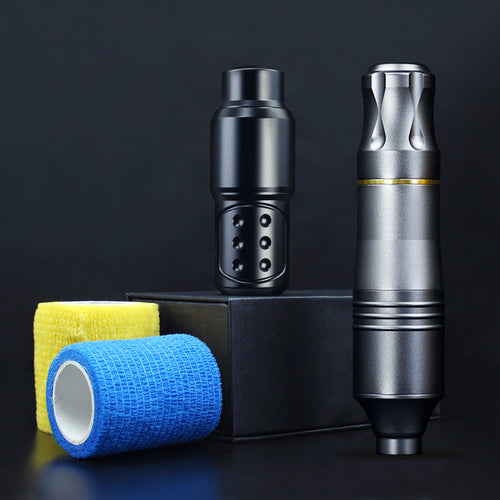What Do Pre-Columbian Tattoos Mean? Popular Tattoo Motifs and Their Significance

Pre-Columbian tattoos are rich in history and meaning. They reflect the beliefs and identities of ancient cultures in the Americas. What stories do these intricate designs tell? How did they serve as expressions of spirituality, social status, and heritage? This article will explore these popular tattoo motifs and their profound significance in Pre-Columbian societies.

Pre-Columbian Societies: What Do We Know?
Long before Europeans arrived, Pre-Columbian civilizations like the Maya, Aztec, and Inca thrived throughout the Americas.
- The Maya, famous for their impressive knowledge of math and astronomy, used tattoos to show spiritual connections and social status.
- The Aztecs got tattoos to pay tribute to their gods and tell important stories from their vibrant mythology.
- On the other hand, the Inca used tattoos in their military culture, using them to mark bravery and loyalty to their empire.
It would be better to appreciate how intricately tattoos were woven into the values and beliefs of these ancient communities by learning about their customs.
What Was the Cultural Significance of Tattoos in Pre-Columbian Societies?
Pre-Columbian tattoos were dynamic expressions of personal and cultural identity, evolving significantly throughout an individual’s life. Here’s a breakdown of their cultural significance:
Mark Personal Journeys
People's tattoos showed how their social roles and identities had changed over time. As people went through different stages of life, their tattoos adapted to reflect these changes. Over time, patterns would change to honor accomplishments or important events, giving people a way to show how their ongoing personal journeys. Some tattoos could even be modified or hidden when life circumstances changed.
7 Stroke adjustable Thunderlordpower U7 Wireless tattoo Machine Pen
Connect with the Spiritual World
These tattoos acted as connections between the living and the dead, helping individuals engage with the spiritual world. They symbolized personal power and provided protection for the afterlife. In mummified remains, tattoos reinforced identity, marking the body as a vessel for both earthly and spiritual presence.
Reflect Social Structure
Tattooing was a skilled job that could only be done by pros, which shows that it was very important to society. This form of work was done by both men and women, showing that it transcended gender boundaries. This practice also reflected the division of labor in societies and emphasized the value of tattooing as a respected tradition.
Celebrate Artistic Tradition
Pre-Columbian cultures used various techniques for tattooing. Their designs were full of intricate symbols, geometric patterns, and nature-inspired images. Tattooing for them was a way to express their identity and spirituality all in one beautiful form.

Common Pre-Columbian Tattoo Motifs and Their Meanings
Pre-Columbian tattoos often featured a variety of motifs, each with its unique significance. Here are some common motifs:
Animal Motifs
Animal motifs have a special meaning.
- Frogs are the symbols of water, fertility, and rebirth.
- Jaguars represent symbols of power, and only authorities can use them.
- Snakes symbolize life energy, medicine, and self-healing abilities, while connecting to the underworld.
Nature Symbols
Nature symbols hold profound depth in these cultures.
- The Sun and Moon may symbolize such things as duality, cycles of life, and the measurement of time.
- Trees, with their connection to origin myths and cultural identity, often are considered to connect people to the spirit world.
- Mountain peaks are symbolic of the soul's ability to soar, while jade indicates breath spirit and governance.
- The swirl pattern relates to water, which is crucial to indigenous cultures.
Geometric Patterns
Geometric patterns are equally important. Spirals symbolize the cycle of life and the cosmos. The Chacana (Andean cross) represented their belief in three worlds. Three-pointed stones or triangles symbolized spirit, while specific shapes could indicate social status or spiritual connection.
Colors also played a role in these tattoo traditions. In Aztec culture, yellow typically indicated femininity, violet represented royalty, while both red and black symbolized wisdom.
3mm stroke Tattoo Machine Double head Tattoo permanent makeup CTGE004
FAQs About Pre-Columbian Tattoos
1. How did pre-Columbian tattoos differ from modern tattoos?
Pre-Columbian tattoos were created using puncture or incision techniques with tools like cactus spines or bone implements. They evolved throughout a person's life, reflecting social roles and spiritual beliefs. Modern tattoos use electric machines and typically remain unchanged after application
2. Who received tattoos?
Both males and females received tattoos, with approximately 30% of some coastal populations being tattooed. The practice was common across different social classes and roles, including shamans and authority figures.
3. What were the most common motifs in pre-Columbian tattoos?
Pre-Columbian tattoos commonly featured animal motifs like jaguars (power), snakes (healing), condors (higher world), and centipedes (life/afterlife). They also included nature symbols like trees, mountain peaks, and geometric patterns such as crosses and triangles.
4. Were there any specific motifs associated with shamans in pre-Columbian tattoos?
There were some specific motifs associated with shamans in pre-Columbian tattoos. Here are a few key points:
- Among some indigenous groups, shamans who were tattoo artists applied medicinal tattoos or "tattoo foils" to cure patients of "soul-loss" or to disguise their identity from malevolent spirits.
- Fertility stripes were tattooed on the cheeks of barren women by shamans in some cultures.
- Stick-like anthropomorphic "guardian" markings were tattooed on foreheads to harness ancestral powers.
- Some shamanic tattoos were believed to block evil spirits from entering the body's orifices.

Explore the Enduring Legacy of Pre-Columbian Tattoos
Tattoos from pre-Columbian are more than just works of art; they hold a lot of cultural and historical meaning for people from those times. The intricate patterns tell tales of the Maya, Aztec, and Inca peoples' spiritual beliefs, social systems, and artistic customs that shaped who they were. People still get these tattoos today, and they remind us of how deeply identity, society, and faith have been linked throughout human history.


































